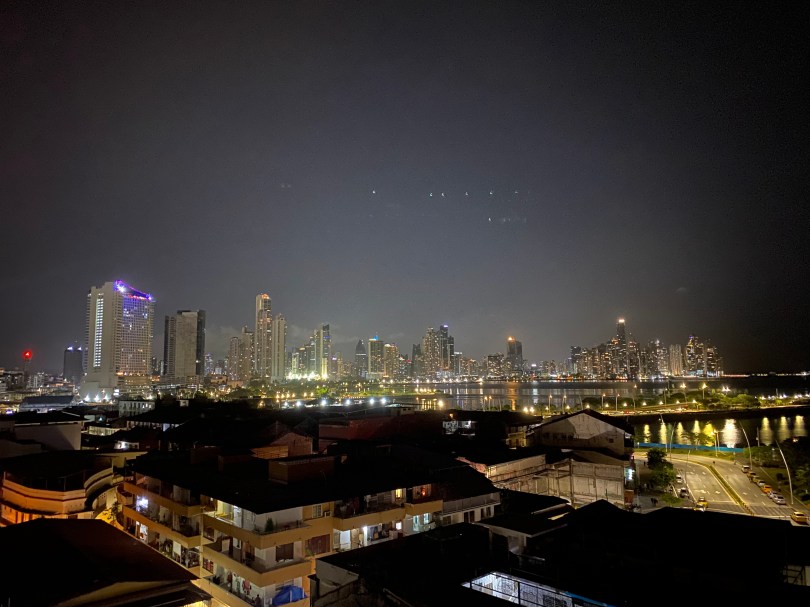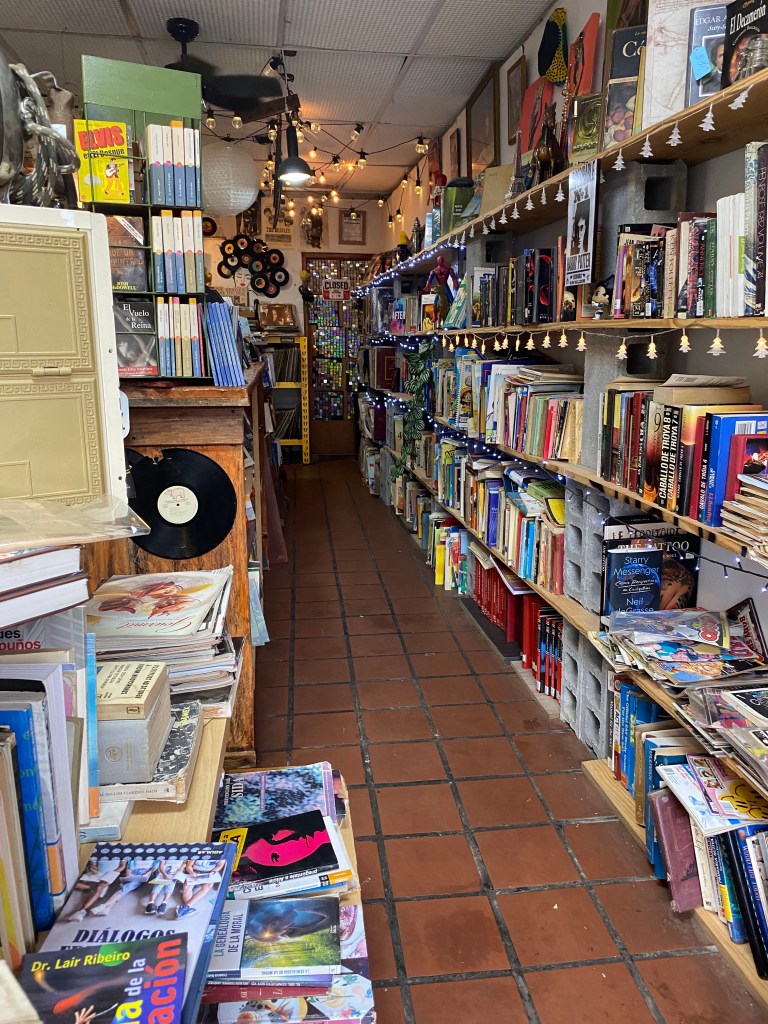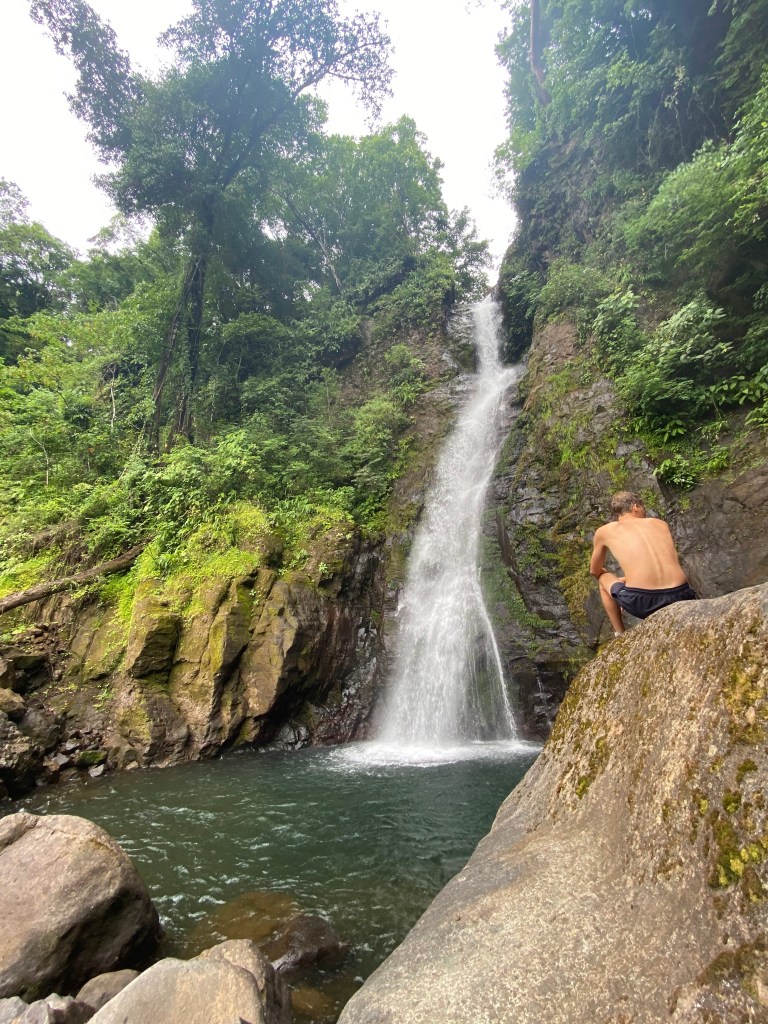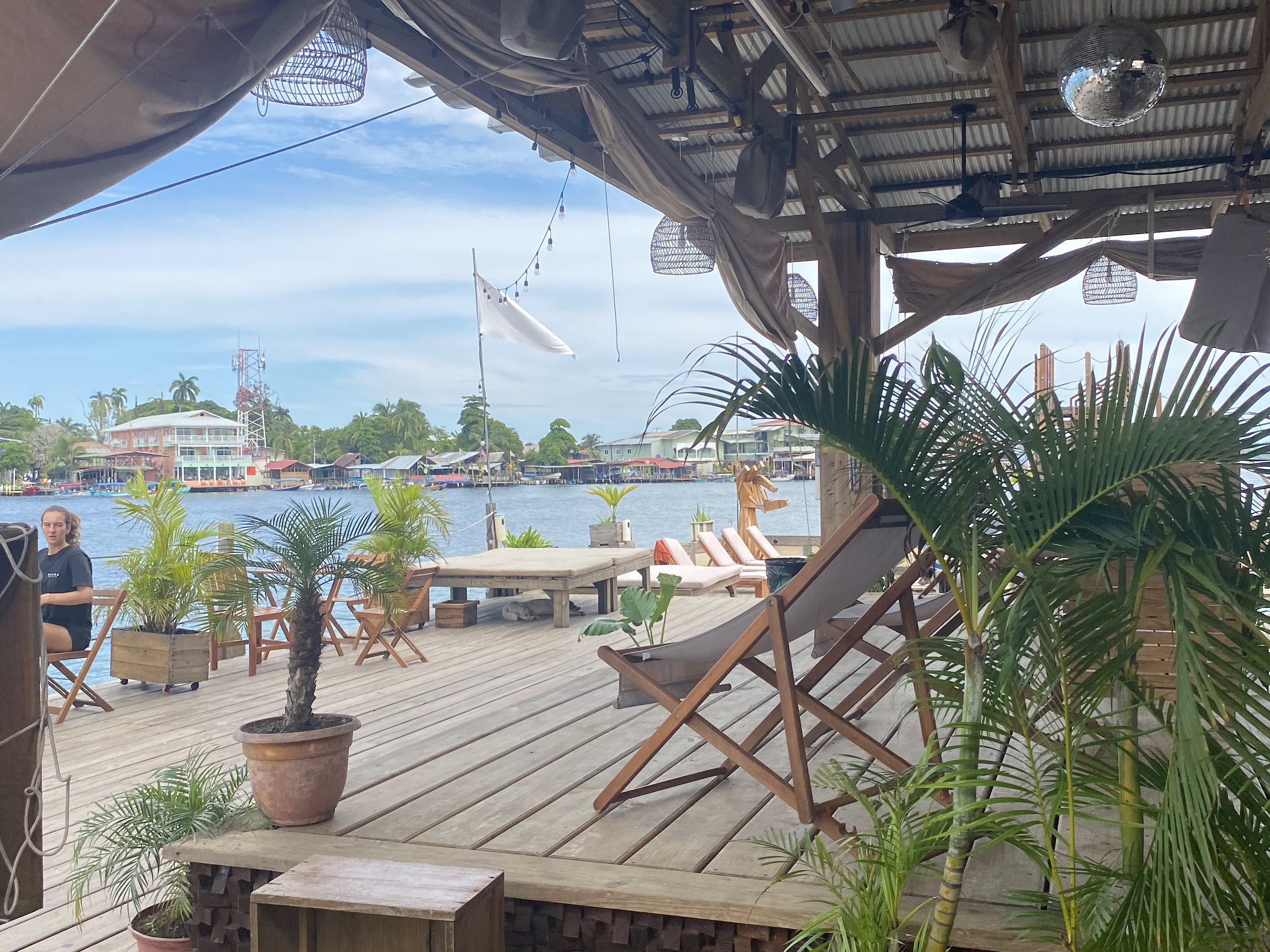Panama City is unlike any other place I’ve been in Central America. It is a large metropolis and doesn’t look like anywhere else in the region with its skyscrapers on one side and colonial town on the other. After a week and a half of discovering everything else that Panama has to offer (and it’s a lot!), finishing in the nation’s capital felt like a must. It was our last stop in Panama, a country that really surprised me and that I really enjoyed. Panama City wasn’t my favourite of the places that we visited but I still had a great time!
Getting from Boquete to Panama City involved a long travel day, 10 hours in total. Our hostel was called Magnolia Inn and honestly, it was like a luxury hostel that felt a little more like a hotel. I really liked it though it wasn’t necessarily the most sociable place as a lot of people seemed to be there as part of a group or a family. This didn’t bother us too much because as you’ll read about later, we actually knew a number of people who were in Panama City at the same time as us! The hostel itself was beautiful, had a great big kitchen, a HIGHLY air conditioned lounge (no complaints here!) and is very central in the neighbourhood of Casco Viejo. This is the old district of Panama city. It’s a UNESCO World Heritage site and dates back to 1673, although it all looks pretty new as there has been a big effort to renovate it recently. One day we did a walking tour to learn a little bit more and while it was interesting, I also thought the guide was a little dry. He clearly knew his stuff but I think he suffered from having done it so many times because it was all a bit rote. It was still good to be led around Casco Viejo a little more, see some new areas and learn a little more.



There’s obviously one thing that comes to mind when most people think of Panama City and we’ll get there but we actually did a lot of other great things! At Hannah’s request we went to MAC Panama, the modern art museum. Sometimes modern art goes a little over my head but I really enjoyed this museum, especially the exhibition ‘Esto es lo que hay‘ by Donna Conlan and Jonathon Harker. It wasn’t trying too hard to be clever, it just was clever and it was fun! The exhibit called itself ‘una retrospectiva seriamente juguetona‘ – a seriously playful flashback. One video used empty bottles of national beer to play the American national anthem, also used as a drinking song by a London gentlemen’s club. The names of the Panamanian beers – Panamá, Soberana and Balboa – reflect aspects of the country’s history and identity, evoking the complex relationship between Panama and the US and shows how national symbols can be arbitrary and deceiving.
After visiting the MAC, Hannah had another request. She wanted to head to the well known Mercado de Mariscos (the seafood market) to try ceviche! Ceviche is a classic dish in Panama and I had never had it before but I have to say, I’m not the biggest fan. We made a bad choice with the black conch because it was extremely chewy but the white fish and shrimp options were better. Some other good spots for food and drink that we tried in Panama City- Tantalo has a great rooftop bar and so does the Selina hostel, both in Casco Viejo. We ate twice at Nomada Eatery, near our hostel. The food was decent but more importantly it’s cheap, the vibes were good and we had a good time sheltering from the rain playing Jenga one night. Panama can be a little more expensive than its Central American neighbours (other than Costa Rica) so La 10 is a great place to save some money! Beers and cocktails are all $1.65 and they also have cheap small plates (though they’re not very good).



A pleasant surprise was Parque Metropolitano, a massive park in the centre of the city which is the perfect place for some hiking, to hang out with some turtles, see sloths and get a great view of the city. It was lovely to have such a big green space in the centre of such a large metropolis and it only costs $1 for nationals and $4 for foreigners. The park boasts almost 300 species of birds, 64 mammal species, 39 species of reptiles and 21 of amphibians. There are a selection of trails but even the most challenging is pretty short and manageable. There are lots of things to look at which makes the perfect excuse to stop for a breather if you need to! It was the kind of hiking that I like where it wasn’t really hiking, more of just a walk around. It was a bit steep up the final bit to the viewpoint but it was nice to look out over the city in one direction and then out to the canal on the other side.


Now time for the main event, or almost. Something I would recommend doing before you visit the Panama canal itself is to visit the Canal Museum which is in Casco Viejo. Visiting the museum before the canal gave us more context for what we saw the next day. There’s so much information inside, some of which I found a little dry, but some really interesting and you can pick and choose the areas where you want to spend more time. One area that I was particularly impressed with was the booth where anyone can go in and record their own account of the events of December 1989, the US invasion of Panama. I think this is an incredible use of the museum to allow anyone who has a story to tell to share their own experience and to make it accessible to everyone visiting the museum. History should be told by the people who lived it but often it’s only a very limited and specific group of people who get that opportunity. Particularly in the case of much more recent history, where the effects might still be unfolding and the experiences are still fresh, I think it’s important to record that. I would love to see more of this in museums.
When it finally came to visiting the canal itself, I was really looking forward to it! I’ve always been quite fascinated by the idea of the canal so it was my one non-negotiables of our visit. To get to the canal, there are various tours or you can just do it yourself. It’s a bit difficult by bus so Hannah and I plus another friend went via taxi. Our first taxi driver in Panama City was super friendly and had given us his number in case we needed anything. He took us to the canal, waited for 1.5 hours and took us back for $30 total (he also gave us some information on things that we passed on the way). It took us about 20 minutes to get there from where we were staying in Casco Viejo (with no traffic on a Saturday morning). We got there at 8am because we had been advised that the last boat of the morning would be passing through around then and there wouldn’t be another until 2.30pm. I definitely think it’s worth asking around about these timings to make sure that you don’t make the trip out there for nothing.


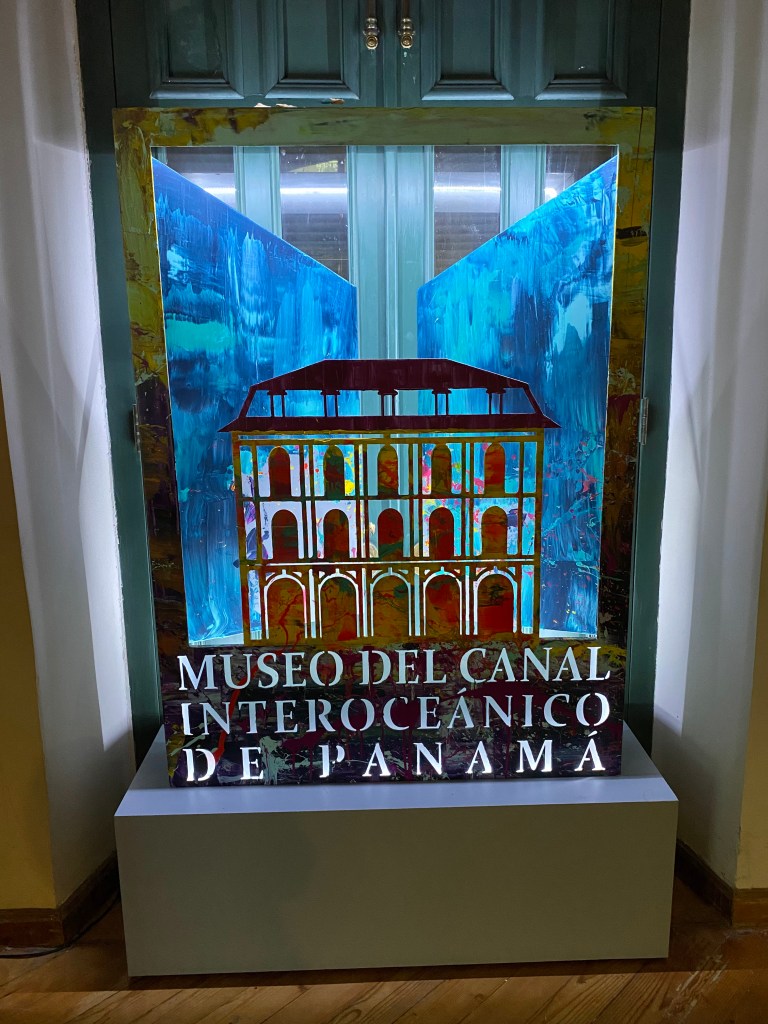
Saying that, all the tour groups had the same idea so it was very busy! Luckily we got through just in time to see the last boat make its way through, even if it was over the heads of a crowd. Other than watching the boats go through, there is also a 45 min film narrated by Morgan Freeman included in your entrance fee. It was interesting but there were a few areas that I think it glossed over. It’s the only other thing to see around the canal which is why I think going to the museum before is a good idea because you can approach the (very positively framed) film a bit more critically. The most interesting thing I learnt about the canal (although I can’t actually remember where) was related to the tariffs that boats pay to go through. This is calculated by weight and a modern cargo ship can expect to pay around $800,000. The smallest fee was only 36 cents and was charged to travel writer Richard Halliburton in 1928 when he swam the length of the canal!
Overall, I was really pleased that I finally got to visit somewhere that I’ve been interested in for years. A big part of what made it so great was our taxi driver, Ariel! He was the first person Hannah and I met in Panama as he took us from the bus station to our hostel when we arrived. We immediately warmed to him after he found out we were from Scotland and started talking about the Scottish boxer, Ken Buchanan. He was a huge fan and even though we had never heard of him, Ariel’s enthusiasm was infectious! He gave us his number in case we needed a lift anywhere else while we were in Panama City and we ended up using him a few times, both for the canal and then to go to the airport. He was good fun, kept things appropriate, acted as a bit of a tour guide on the way to the canal and then changed a flat tire in about five minutes on the way home! On the way out of Casco Viejo to the canal, we also got a view of Ancon Hill, the home of the largest Panamanian flag! Ancon Hill was previously controlled by the US government and was home to administration for the canal. In 1977, Panama was given back control over the canal and the flag the size of a football field was erected here as a symbol of Panama’s sovereignty.
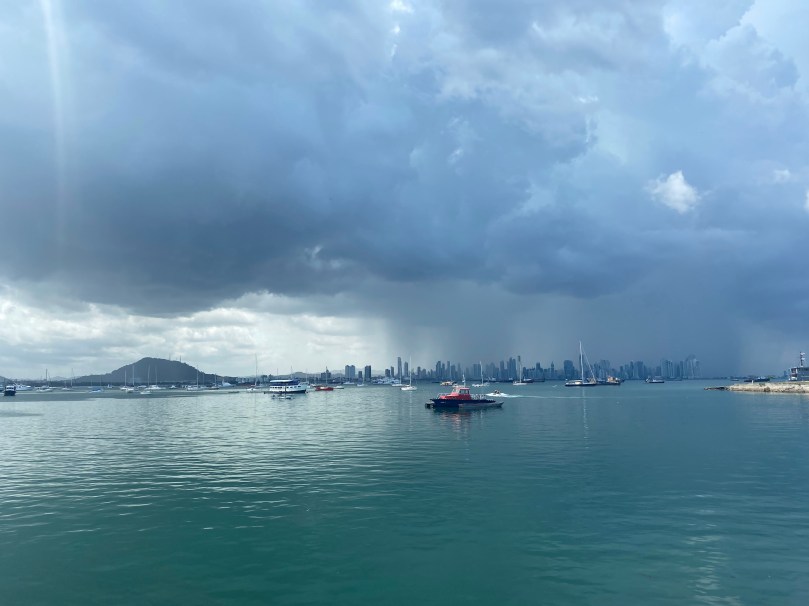
Panama City was a really special place for me because of the people we met or reconnected with. From my time working in France, I actually have a friend from Panama City who I had reached out to before we arrived. Mafe gave us some recommendations (going to Parque Metropolitano was her idea so thank you!). We had a bit of a chaotic afternoon when we tried to meet up with her. We agreed on meeting at the Amador causeway, a 6km strip extending into the ocean away from the city, built out of the rock excavated from the Panama canal! We got dropped at the far end of the causeway, planning to walk back but we definitely underestimated the heat that day! What was cool though was that from the beautiful weather on the causeway, we could look over the water to the skyscrapers of the city and see dark clouds and rain rolling in. Eventually we caught up with Mafe and her friend Ricardo at a restaurant. It was great to see her again and a lovely reminder that the world is a small place!
There were others that we got to reconnect with while in Panama City, all people that we had met in the Lost and Found hostel. Makenzie, an American girl who we had arrived at Lost and Found with, arrived to our dorm in Magnolia Inn and came to the canal with us. We also got to see the Dutch trio, meeting up with them for some food, drinks and an embarrassingly bad game of beer pong! They were such a lovely group and we were sad that we didn’t get to see more of them. Saying that, we did see one of their number, Tomas, when we were in Colombia but Livia and Youri headed home from Panama City. We also saw more of Makenzie in Colombia, right before flying home.



This brings me to the end of our time in Panama. Initially, Panama was only really meant to act as a stopover between Honduras and Colombia. It was also going to be the last country I had to cross off in Central America, I can now say that I’ve visited them all! But in the end, it was so much more than this. Panama has such a variety of things to offer, the infrastructure is pretty good for tourists, I found the people to be welcoming and helpful and I think that it attracts a type of traveller that I’m likely to get along with (maybe with the exception of the party hotspot of Bocas del Toro). Now that I’m living in Costa Rica, Panama is just next door and I’m definitely hoping to get back there again!

